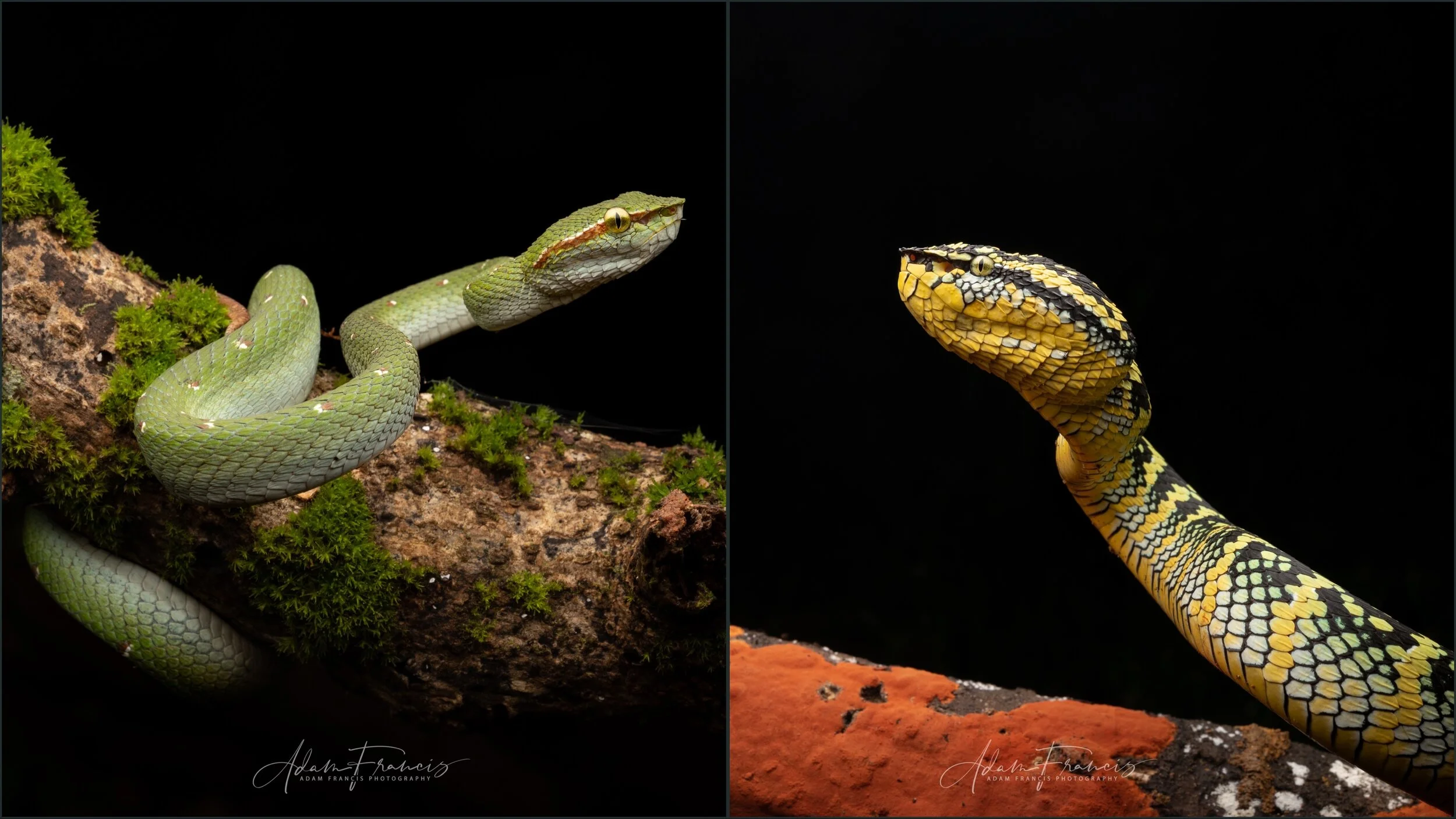SUMMARY
VENOM: Somewhat toxic
PREVALENCE: Common
ACTIVE PERIOD: Active at night
KEY ID FEATURES: Highly sexually dimorphic, Females large with yellow, black and white color, males small with red and white facial stripes and red and white spots on the body and a reddish tail, both have gold eyes
BEHAVIOR: Arboreal ambush predator from low to medium height in trees and bushes, usually stays still and ready to strike, will bite readily with fast strikes
SIZE: Small/Medium - 30cm (males ) - 80cm (females)
QUICK ASSESSMENT 0-10
GALLERY
IMPORTANT: Many snakes have significant variance in coloration and pattern even within the same species. There can also be extreme differences in appearance from juveniles to adults so it is important to never assume you have properly identified a snake.
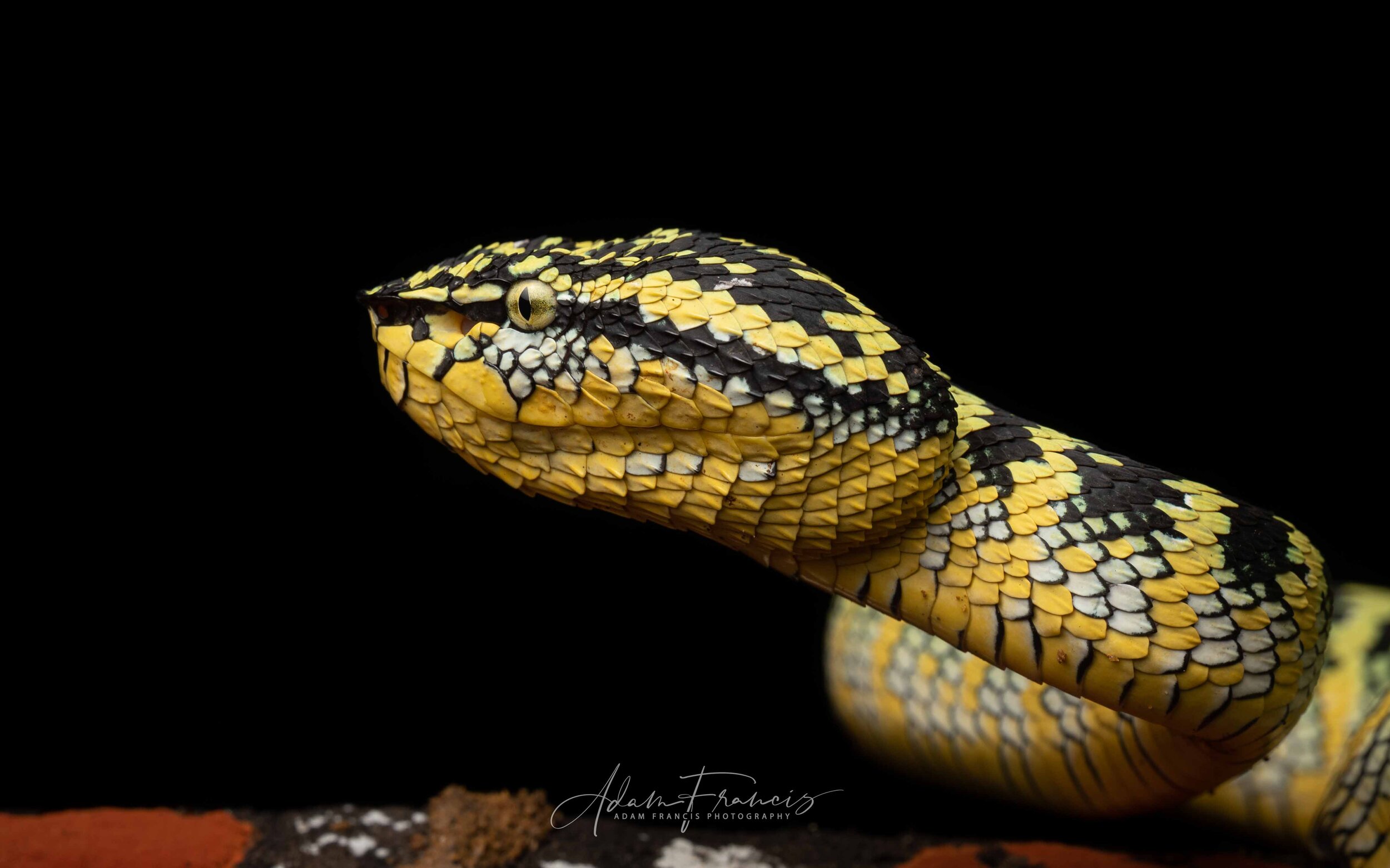
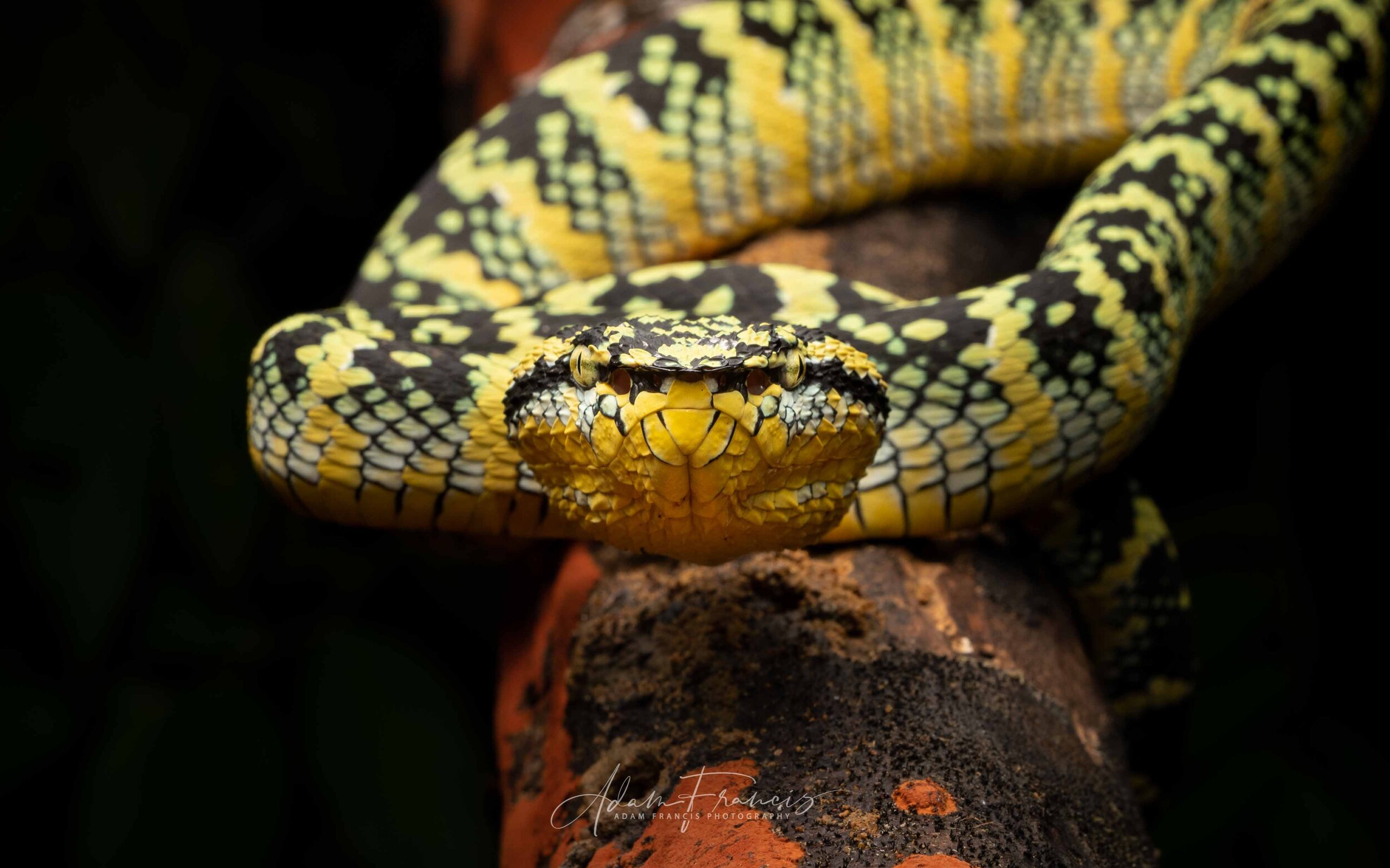

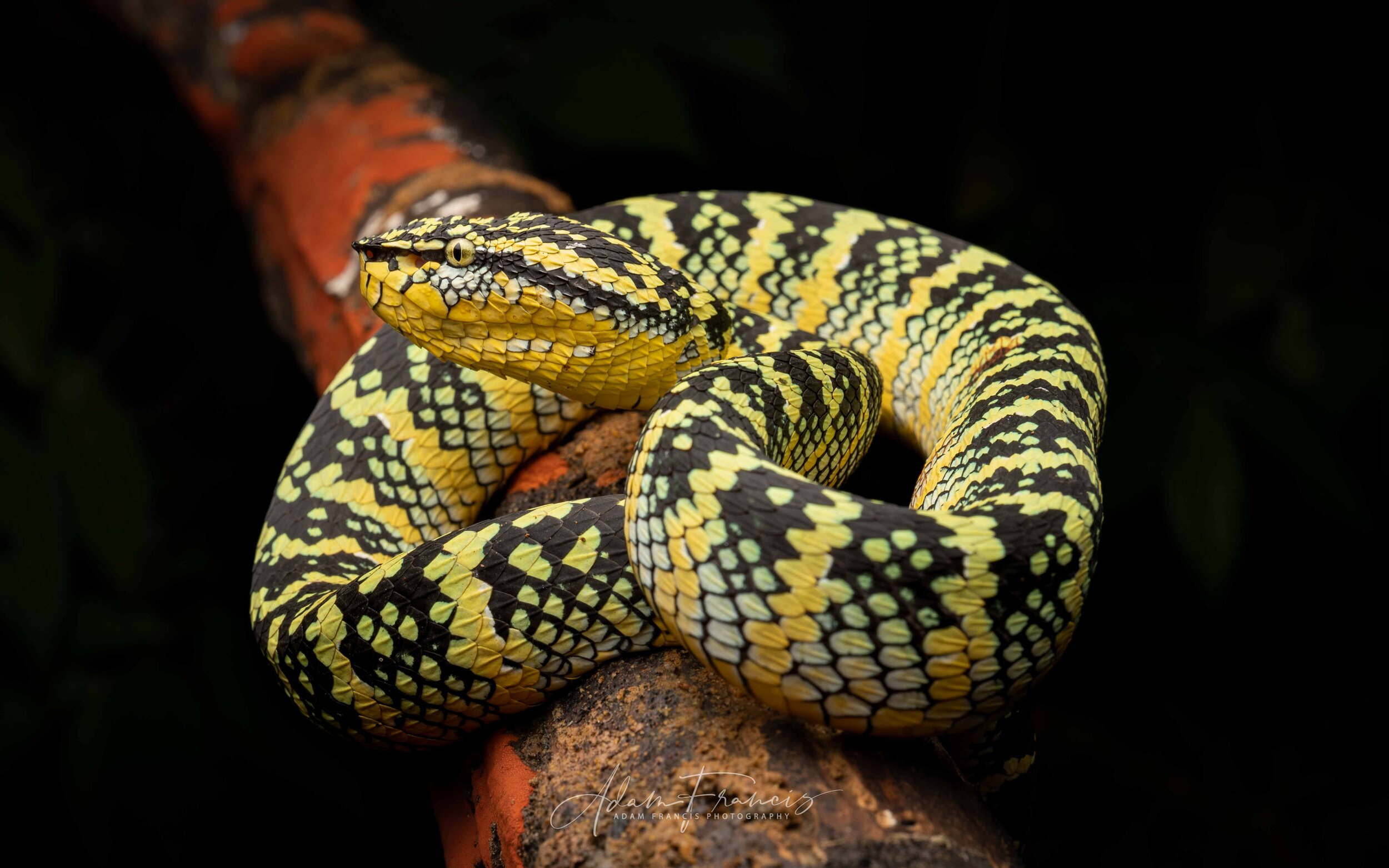
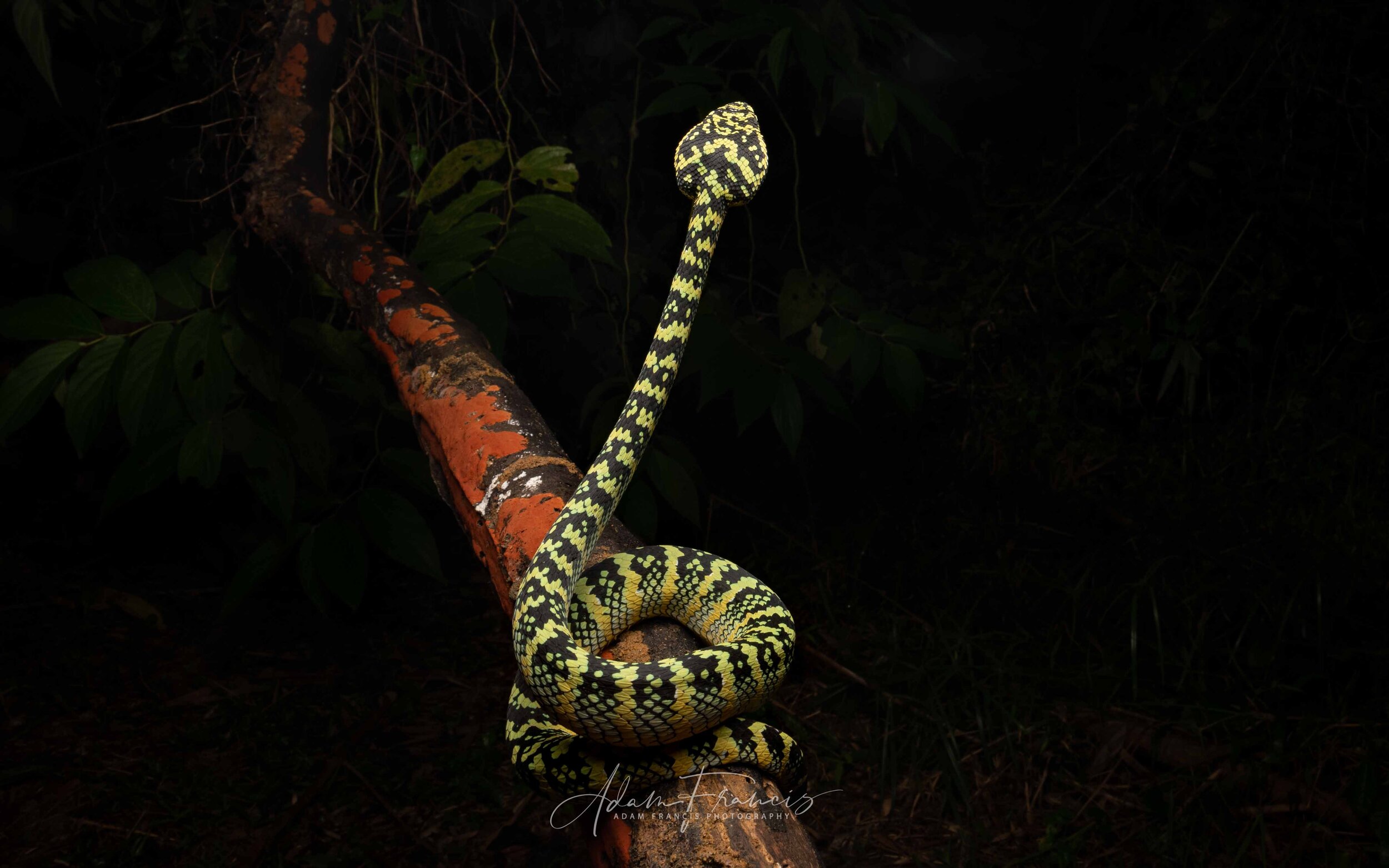
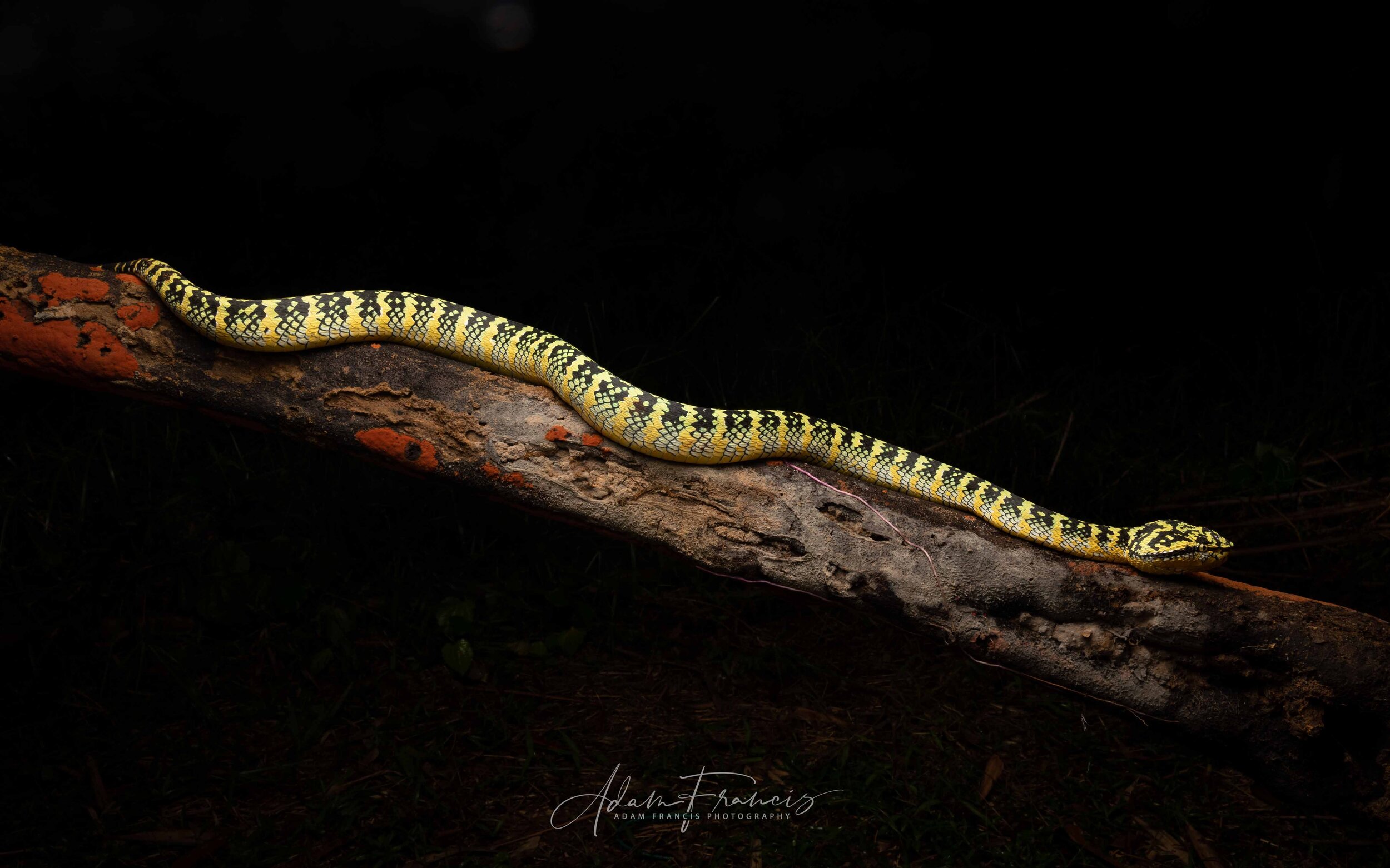
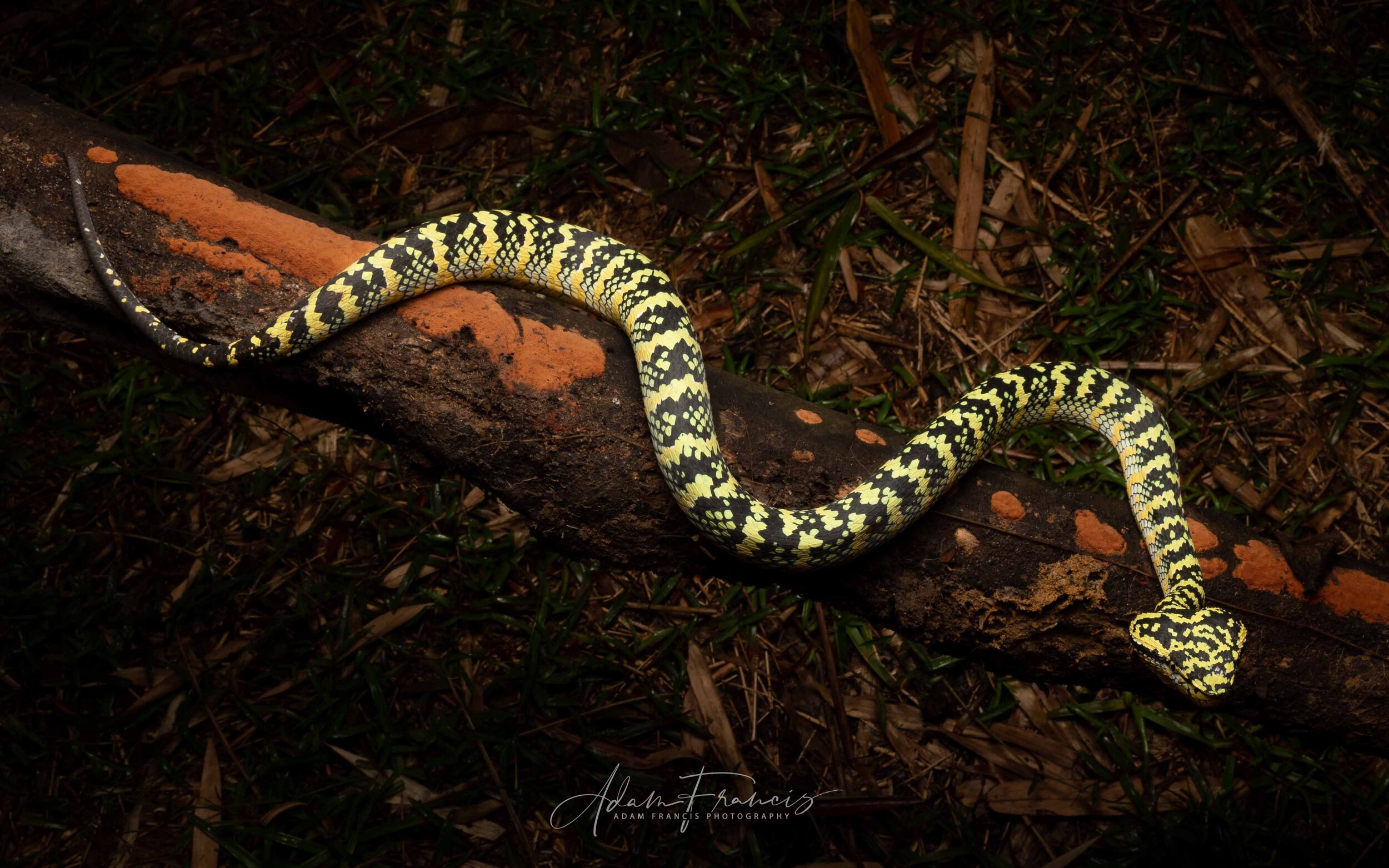


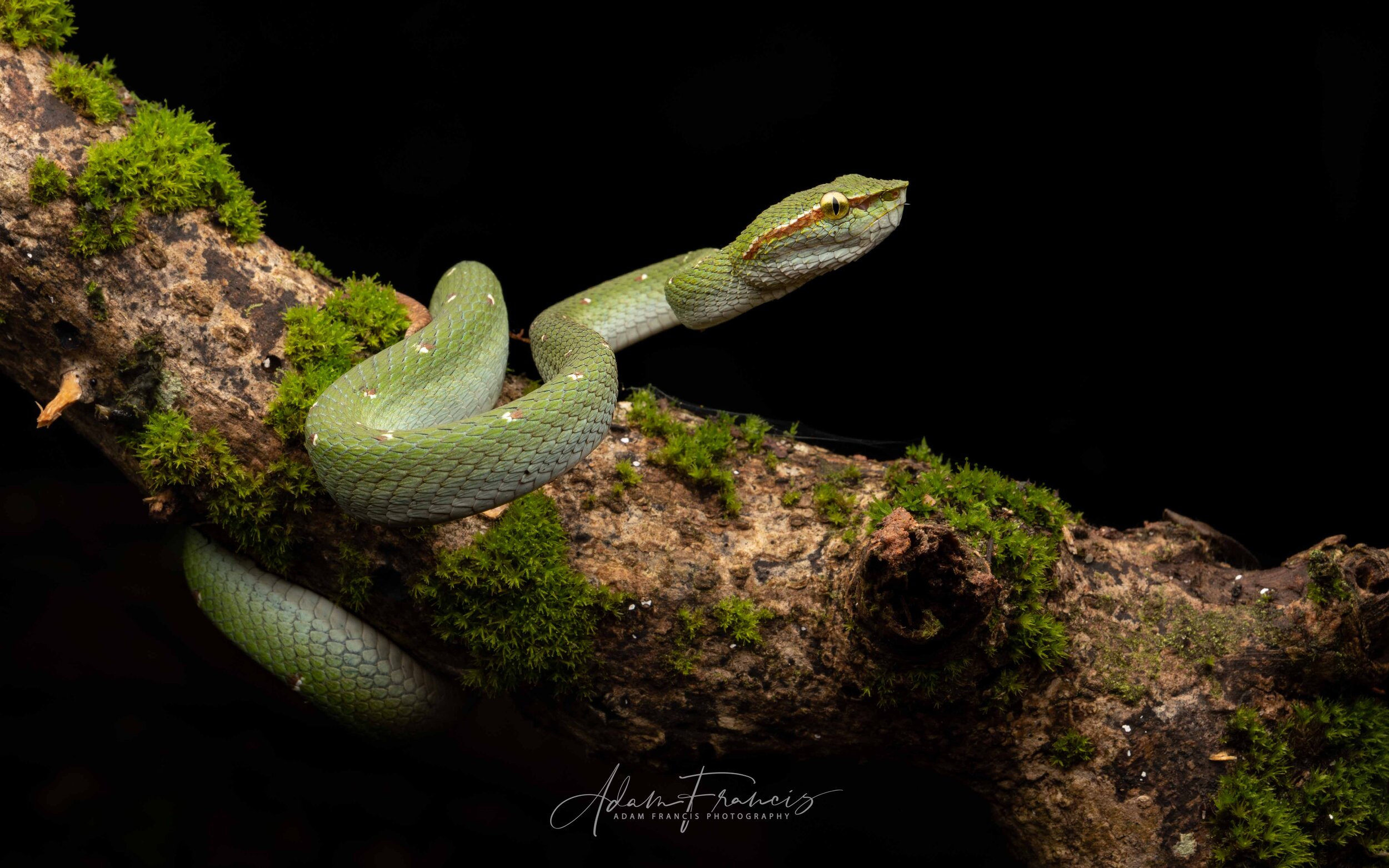
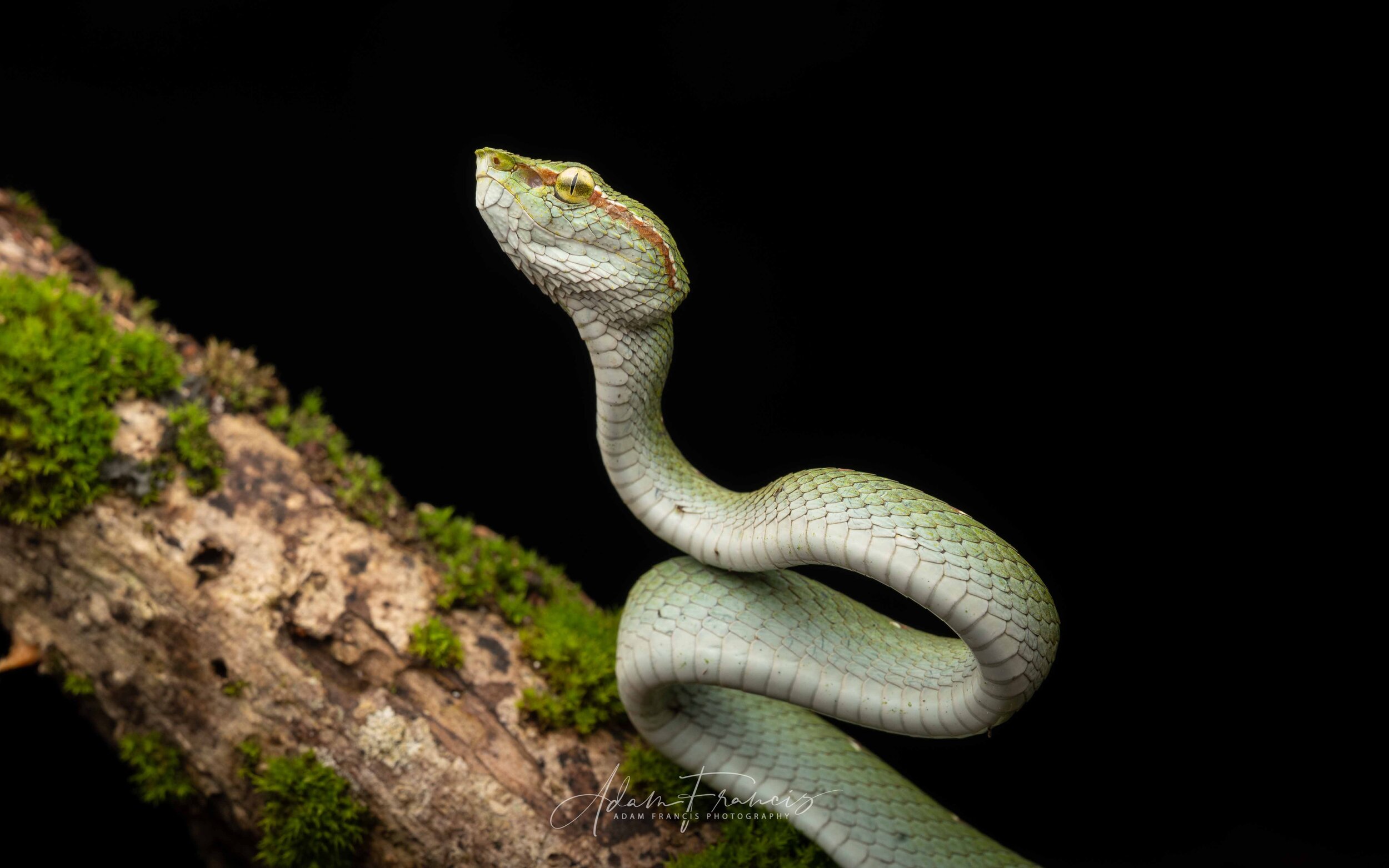
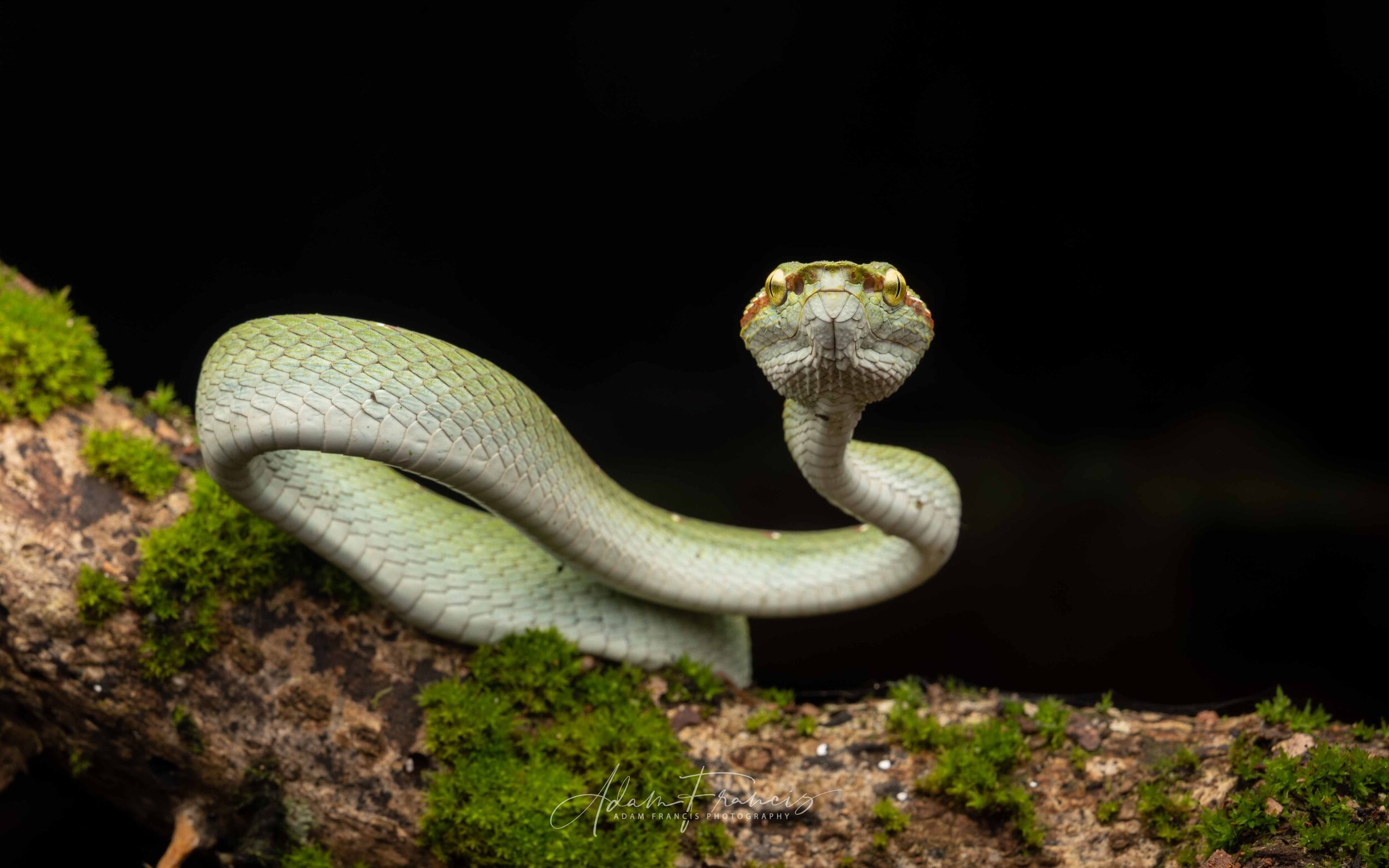
DESCRIPTION
A venomous species. The Wagler’s Pit Viper is highly sexually dimorphic with females bright yellow, white, black and light green, achieve a relatively large size up to and sometimes over 80cm. When juveniles females are much closer in appearance to males with green bodies and thin red and white bands running the length of the body. These colors change over time to the more iconic mature females coloration described here. Males are green with red and white facial stripes, red and white spots down the body and a reddish tail. They are much smaller than females reaching approximately 30-40cm. Both males and females have keeled scales all over the body including the head as opposed to the granulated scales found on many other Asian viper species. Females have flared facial scales the curve slightly out from the head and jaw. Both males and females have metallic gold color eyes.
BEHAVIOR
Active at night and occasionally roosting in bushes during the day. The Wanglers Pit Viper is an ambush predator that will wait in a single position ready to strike. They are arboreal and can be found low in bushes or higher up in trees but generally position within 1-2 meters of the ground. They are a viper and have relatively long retractable fangs and will bite readily at anything that comes within range. Generally not prone to give chase but will hold their ground if they feel cornered like most vipers. Not actively aggressive but will not hesitate to bite. A bite from a Wagler’s Pit Viper should be considered very serious and medical attention should be sought immediately. Although not known to be deadly serious damage can occur from a bite even if treated and complications can always arise.
HABITAT
Generally found in forested areas along open spaces like trails or abandoned roads where geckos and other prey can be ambushed. Generally not known to position near populated locations with artificial light. Found at various elevations ranging from a sea level up to foothills and low on mountain ranges in certain locations.
MISTAKEN IDENTITY
NO SNAKE SHOULD EVER BE HANDLED BY ANYONE BUT EXPERTS: Relatively distinct looking with a large triangular head, especially females, though males can look similar to other viper species given their size and green color. No viper should ever be approached or handled. If found observe from a safe distance.

